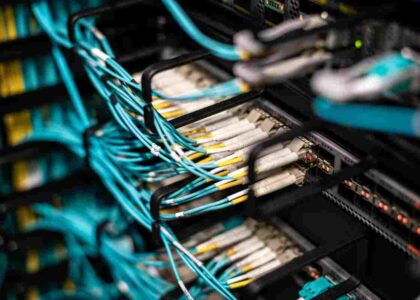In today’s digitally connected world, network protocols are the unsung heroes that enable our internet browsing, video streaming, online gaming, cloud computing, and even smart home automation. Without these protocols, our digital experiences would crumble into chaos. If you’re diving into networking, cybersecurity, or IT, understanding essential network protocols is a must. In this blog, we’ll walk through what network protocols are, why they matter, and deep dive into the core protocols that drive the internet and private networks. Let’s humanize this technical topic so that it’s digestible and even a little fun!
What Are Network Protocols, Really?
Imagine network protocols as the languages computers and devices use to talk to each other. Just like humans have rules in communication (like grammar and politeness), devices have predefined rules for how data is sent, received, and interpreted.
Without protocols, your laptop wouldn’t know how to ask a server for a web page, and your smartphone wouldn’t know how to retrieve your latest Instagram notifications.
So, in simple terms: Network protocols make communication possible.
Why Are Network Protocols Important?
- Standardization: They provide a universal set of rules so that devices from different manufacturers can communicate seamlessly.
- Efficiency: Data is transmitted quickly and accurately.
- Security: Protocols help in authenticating devices and encrypting data.
- Error Handling: They make sure that data gets delivered correctly, and if something goes wrong, they know how to recover.
Now, let’s dive into the essential network protocols you should know in 2025 (and beyond).
1. Transmission Control Protocol/Internet Protocol (TCP/IP)
Why It Matters: TCP/IP is the grandparent of internet protocols. It’s the foundation upon which the internet runs.
How It Works:
- TCP breaks data into packets, ensures they reach their destination, and reassembles them.
- IP takes care of addressing and routing the packets.
Example: When you send an email, TCP/IP ensures the message is split into pieces, sent across different routes, and stitched back together perfectly when it arrives.
SEO Tip: If you’re searching for “how the internet works,” TCP/IP is your starting point.
2. Hypertext Transfer Protocol (HTTP) and HTTP Secure (HTTPS)
Why It Matters: HTTP enables you to browse websites. HTTPS adds a layer of security by encrypting the communication.
How It Works:
- HTTP defines how messages are formatted and transmitted.
- HTTPS uses SSL/TLS protocols to encrypt these messages, protecting sensitive data like passwords.
Example: When you shop online or log into your bank account, you should see “https://” in the URL.
Fun Fact: Google ranks HTTPS websites higher than HTTP ones.
3. File Transfer Protocol (FTP) and Secure FTP (SFTP)
Why It Matters: Moving large files over the internet needs a specialized system, and FTP was designed for that.
How It Works:
- FTP lets you upload/download files from servers.
- SFTP adds a security layer by encrypting the data transfer.
Example: Web developers use FTP clients like FileZilla to upload website files to hosting servers.
SEO Tip: Always secure your website files using SFTP to prevent unauthorized access.
4. Simple Mail Transfer Protocol (SMTP)
Why It Matters: Without SMTP, you wouldn’t be able to send emails.
How It Works: SMTP is like a postal worker: it picks up your email and delivers it to the recipient’s email server.
Example: Every time you hit “send” on an email, SMTP springs into action behind the scenes.
5. Post Office Protocol (POP3) and Internet Message Access Protocol (IMAP)
Why It Matters: SMTP sends emails, but POP3 and IMAP help you receive them.
How They Work:
- POP3 downloads emails from a server and deletes them from the server.
- IMAP syncs your emails across multiple devices.
Example: When you check your Gmail on both your laptop and phone, IMAP ensures you see the same inbox.
6. Domain Name System (DNS)
Why It Matters: Without DNS, you’d need to remember IP addresses to visit websites. Imagine typing 142.250.190.78 instead of “google.com”!
How It Works: DNS translates human-friendly domain names into IP addresses that computers understand.
Example: When you type “openai.com” into your browser, DNS finds the corresponding server’s IP address.
Fun Fact: Changing your DNS to a faster provider (like Cloudflare’s 1.1.1.1) can speed up your internet.
7. Dynamic Host Configuration Protocol (DHCP)
Why It Matters: Assigning IP addresses manually would be a nightmare for network admins. DHCP automates it.
How It Works: DHCP dynamically assigns IP addresses to devices on a network.
Example: When you connect to Wi-Fi at a cafe, DHCP gives your phone an IP address without you lifting a finger.
8. Secure Shell (SSH)
Why It Matters: SSH is the protocol of choice for secure remote login and management.
How It Works: SSH encrypts the communication between your device and the remote server.
Example: System administrators use SSH to manage servers remotely without exposing passwords or sensitive data.
SEO Tip: If you Google “how to secure a Linux server,” SSH configuration will be at the top of every guide.
9. Address Resolution Protocol (ARP)
Why It Matters: Within a local network, devices need to translate IP addresses into MAC (hardware) addresses to actually send data.
How It Works: ARP resolves IP addresses to MAC addresses.
Example: When your laptop sends a file to your printer over Wi-Fi, ARP makes sure the data gets to the right device.
10. Border Gateway Protocol (BGP)
Why It Matters: BGP is the protocol that keeps the internet connected globally. It’s called the “postal service” of the internet.
How It Works: BGP determines the best path for data to travel between different autonomous systems (ASes) on the internet.
Example: When you visit a website hosted in another country, BGP decides the fastest route for your data packets.
Honorable Mentions
- SNMP (Simple Network Management Protocol): Used for monitoring and managing network devices.
- NTP (Network Time Protocol): Keeps clocks in sync across computers worldwide.
- ICMP (Internet Control Message Protocol): Used for sending error messages and operational information (think: ping commands).
Final Thoughts: Why Learning These Protocols Matters
Understanding essential network protocols is not just for IT professionals; it’s increasingly important for anyone interacting with technology. Whether you’re a digital marketer, software engineer, cybersecurity analyst, or even a curious learner, knowing these basics gives you a major advantage.
Key Takeaways:
- Network protocols power our connected world.
- They ensure data is transmitted, received, secured, and understood.
- Learning the core protocols is like learning the ABCs of the digital universe.
In 2025 and beyond, with the rise of 5G, IoT (Internet of Things), and edge computing, network protocols will become even more critical. So if you’re planning to level up your tech skills, start by mastering the basics.
Frequently Asked Questions (FAQs)
Q1: What is the most important network protocol?
TCP/IP is arguably the most crucial because it forms the base of internet communications.
Q2: Are HTTP and HTTPS the same thing?
No. HTTPS is HTTP with encryption, making it safer for sensitive communications.
Q3: How does DNS impact my browsing experience?
Faster DNS servers can significantly reduce website loading times.
Q4: Can I manually configure protocols like DHCP and DNS?
Yes, but it’s generally not needed unless you’re troubleshooting or optimizing a network.
Q5: Is learning network protocols hard?
Not at all! With real-world analogies and hands-on practice, it can be pretty fun.
Conclusion
Network protocols might seem invisible, but they power every email you send, every video you watch, and every website you browse. They’re the hidden scaffolding of the internet. By understanding essential network protocols, you’re not just improving your technical knowledge—you’re unlocking a deeper appreciation for the digital world around you.
Start small, stay curious, and who knows? You might just end up building the next big thing online!






